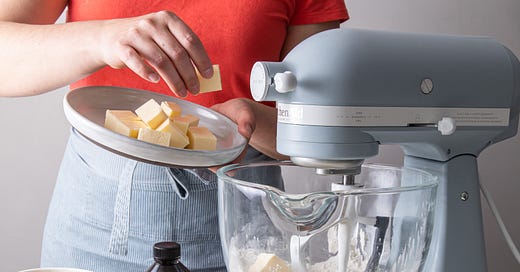The Home Baker's Guide : Essential Equipment
SEPTEMBER SALE! Back to school means more time back in the kitchen. Get your gear in order for fall baking!
Hi Bakers! It’s finally back to school time in the Huff house. After a busy summer of moving and playing with the kids, I am looking forward to settling back into a routine and spending more time in the kitchen.
This month, we will be getting our kitchens stocked and ready for fall baking. Moving was a great chance for me to reset and really evaluate the tools and baking equipment that I really need.
Keep reading with a 7-day free trial
Subscribe to Tessa Huff's Bake Club to keep reading this post and get 7 days of free access to the full post archives.



